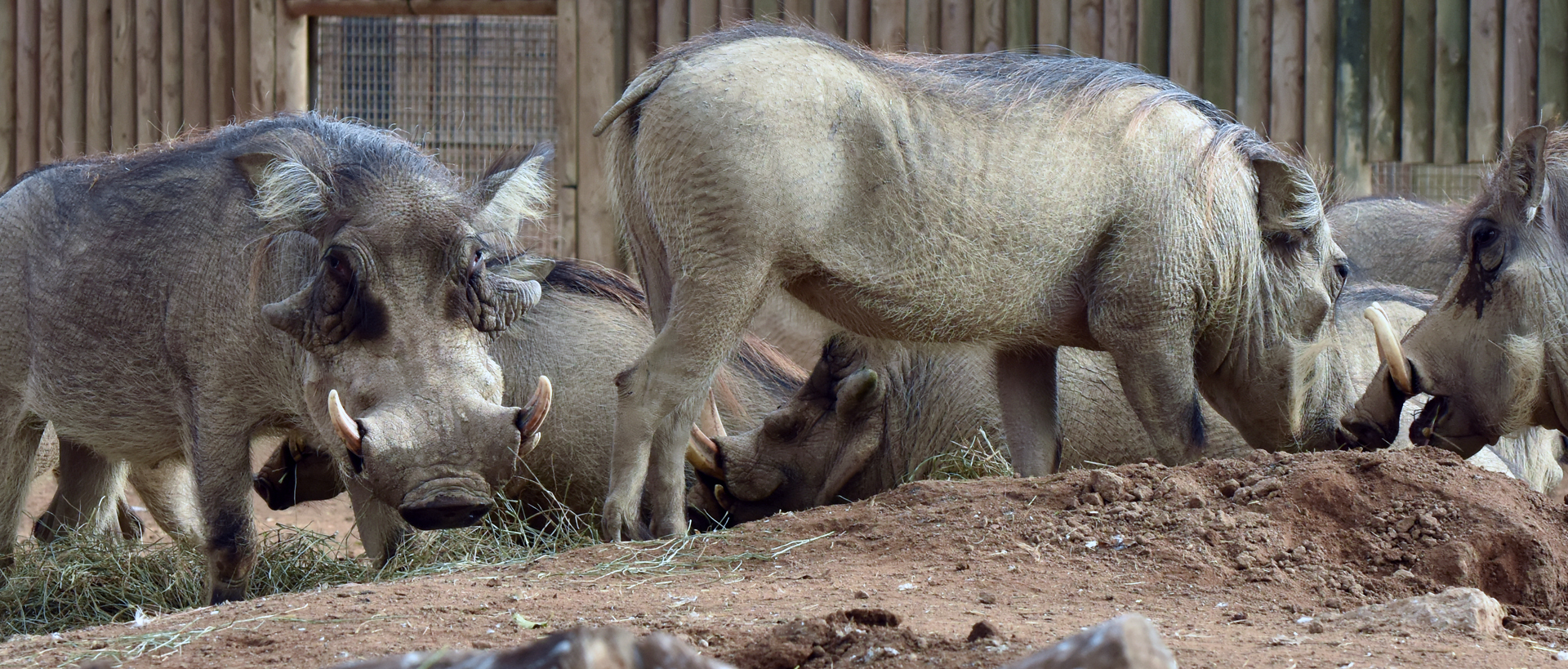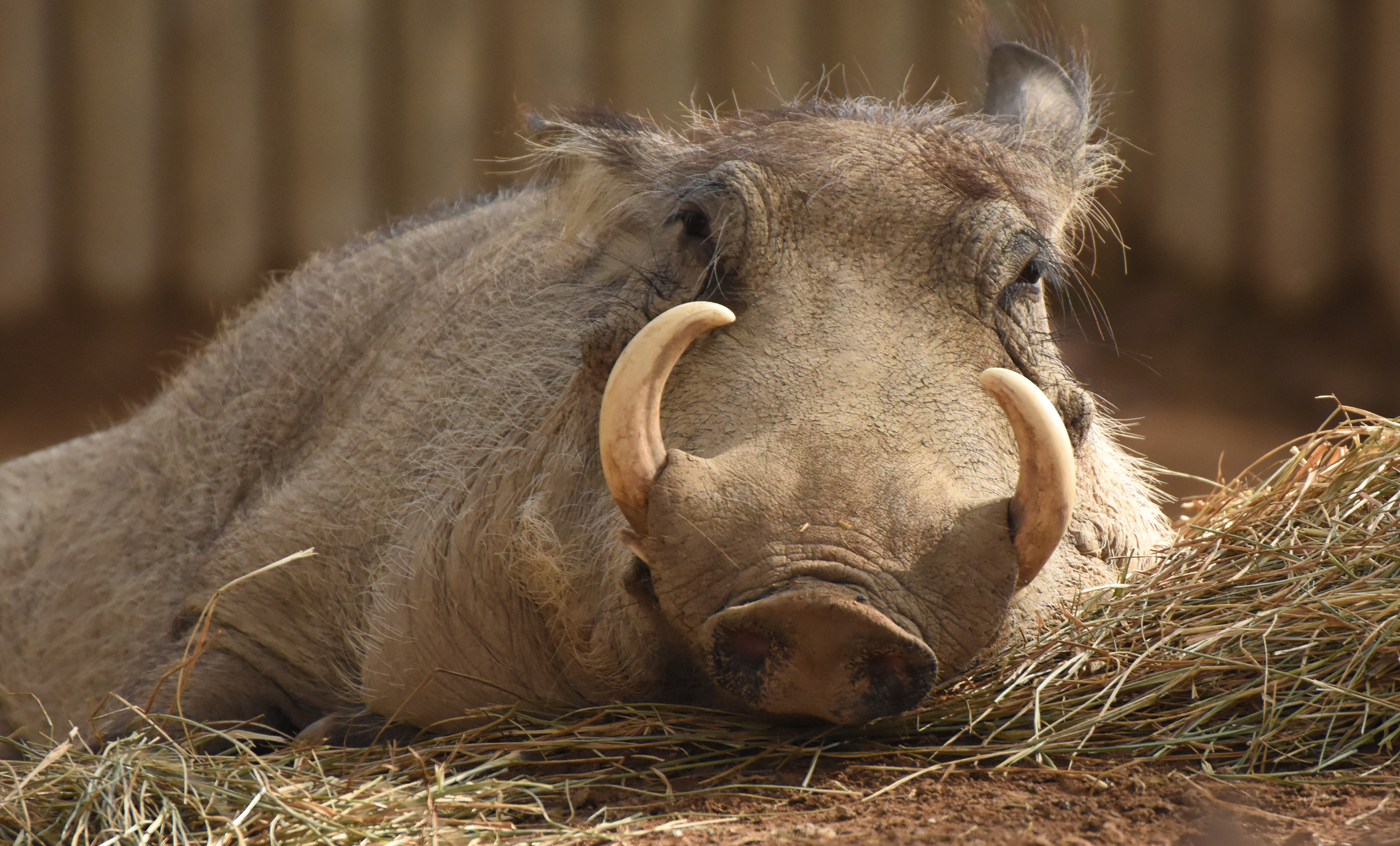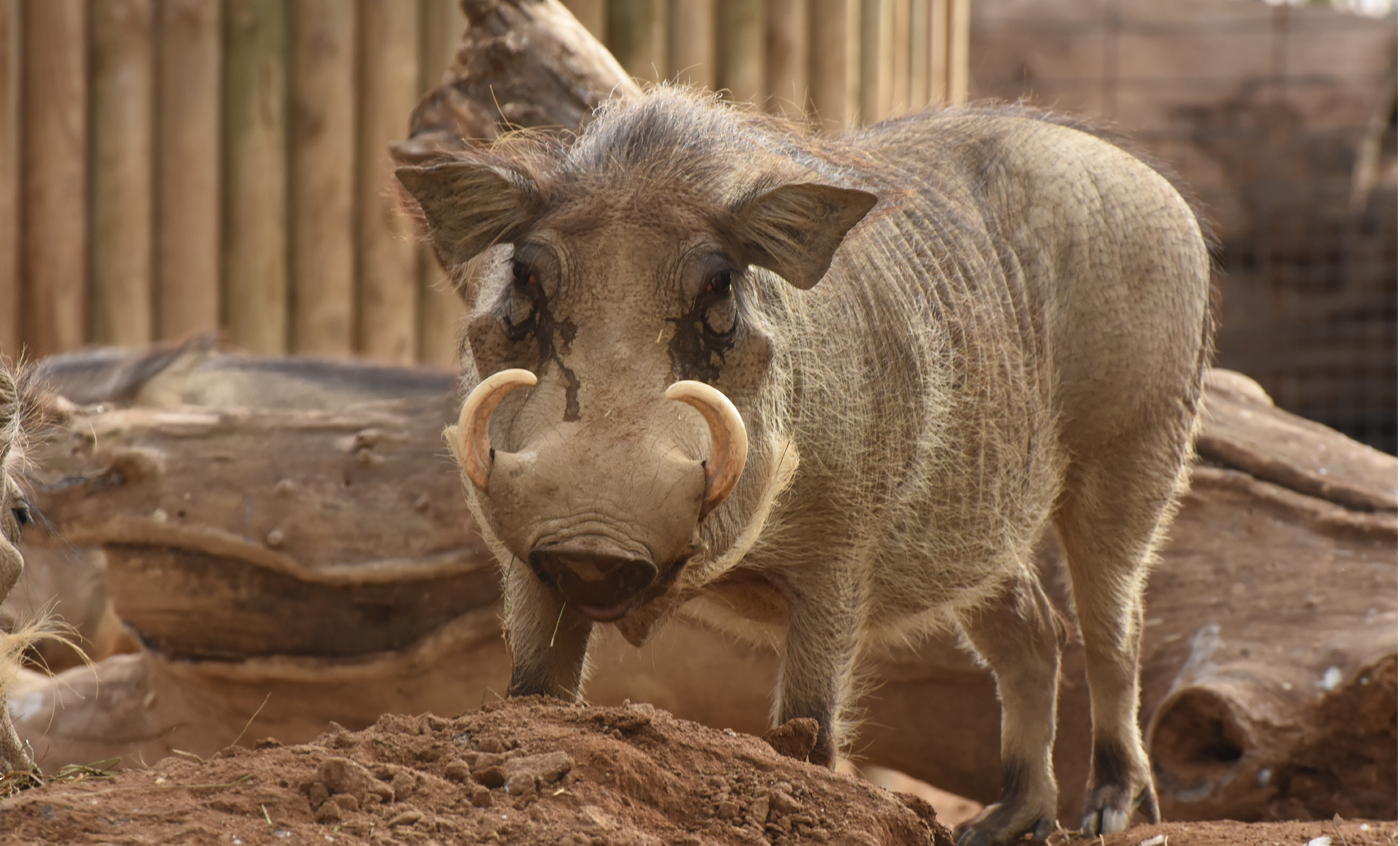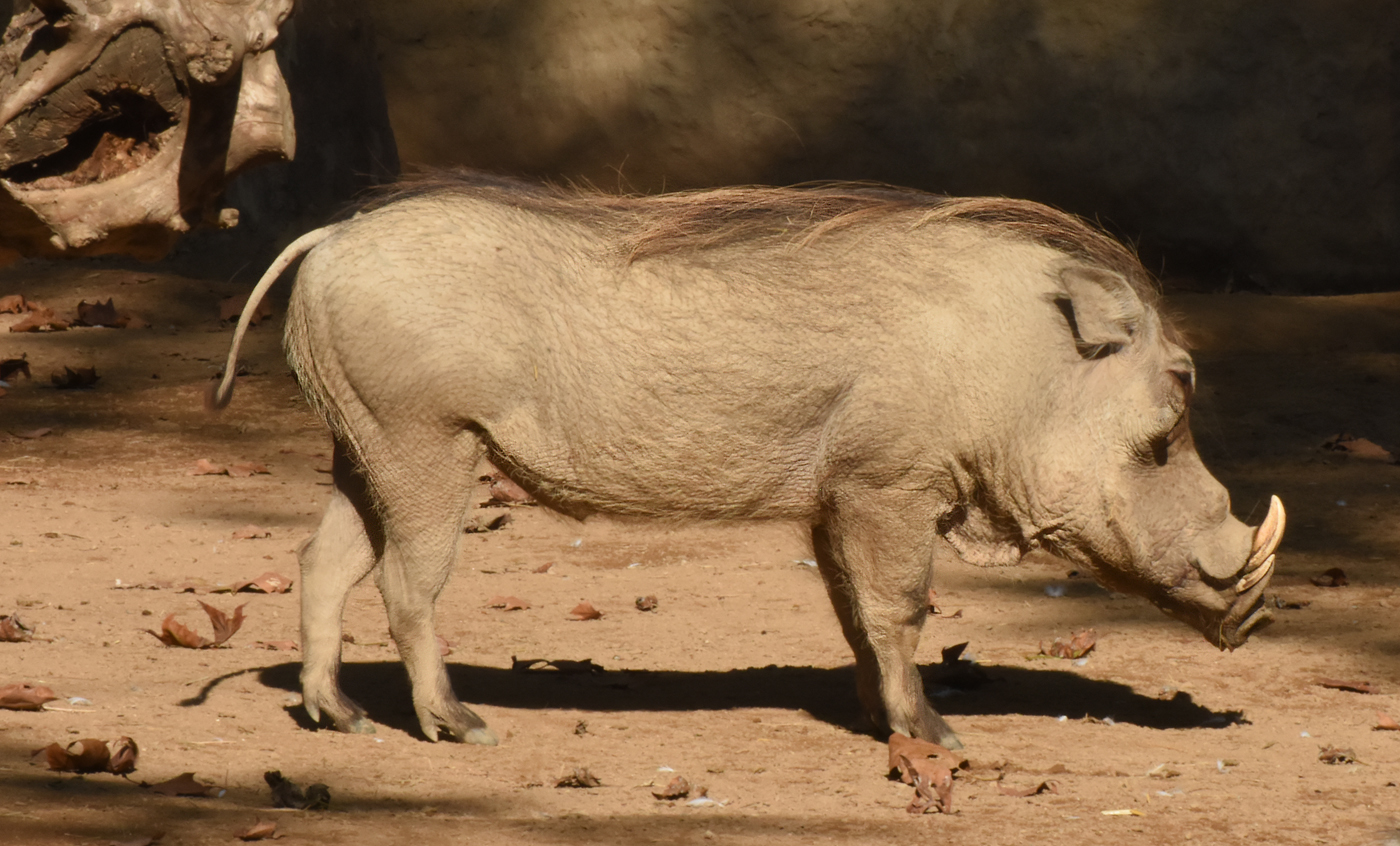Warthog
The warthog is an African wild pig practically without hair, except for its long mane. It has two characteristic pair of moles in the face and big tusks, present in both sexes, although males’ are more developed.
It lives in savannahs and open areas, where females and piglets form small family groups, while adult males are solitary. It feeds on a wide variety of plants, including crops.
Breeding program
Natural habit
Great part of Africa in southern Sahara, except for rainforests.
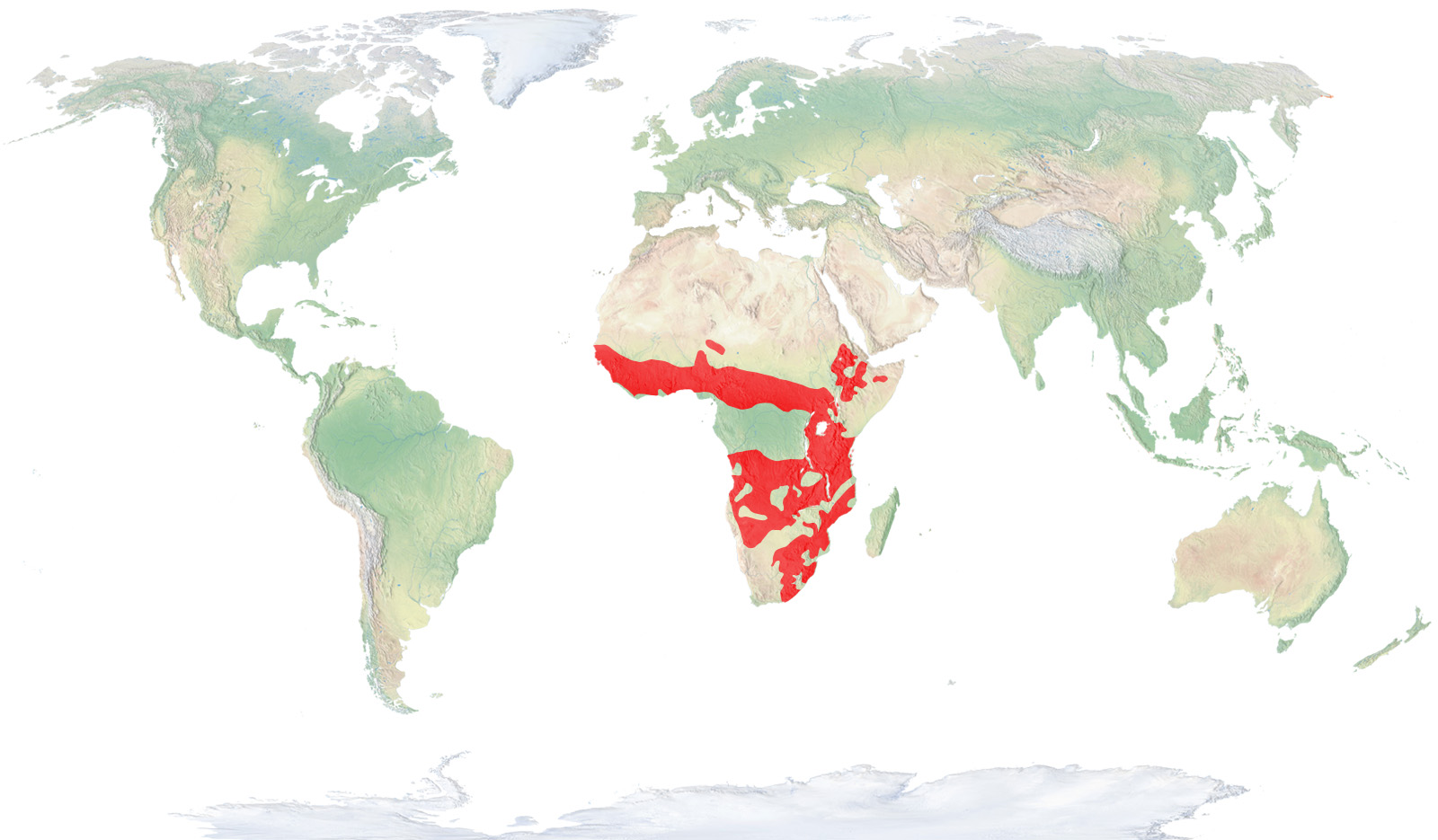
- Distribution / Resident
- Breeding
- Wintering
- Subspecies
Risk level
- Extint
- Extint in the wild
- Critically endangered
- In Danger
- Vulnerable
- Near threatened
- Minor concern
- Insufficient data
- Not evaluated
Taxonomy
Physical characteristics
Biology
Reproduction
Biology
The warthog is an African wild pig practically without hair, except for its long mane and a tuft of hair at the end of the tail, that it raises as a warning to other warthogs, when running from danger. It has two characteristic pair of moles in the face and big tusks, present in both sexes, although males’ are more developed. Its tusks in the upper jaw curve upwards and can measure between 25 and 60 centimetres, while the ones in the lower jaw are considerably smaller, but sharper.
Savannahs with trees, grass plains and semi-deserts with bushes.
With an omnivore diet, it feeds on a wide variety of plants, such as grass, fruits, berries, tubers, bulbs, moss and roots, but it also eats bird eggs, small animals and even carrion. When eating, it tends to lean on the rear legs’ wrists, and uses its snout to dig and look for hidden roots and bulbs underground.
With an omnivore diet, it feeds on a wide variety of plants, such as grass, fruits, berries, tubers, bulbs, moss and roots, but it also eats bird eggs, small animals and even carrion. When eating, it tends to lean on the rear legs’ wrists, and uses its snout to dig and look for hidden roots and bulbs underground.
It lives in savannahs and open areas, where females and piglets form family groups that can reach twenty individuals, while adult males are solitary. It uses holes dug by other animals, mainly aardvarks (Orycteropus afer), to sleep and shelter from predators and extreme temperatures, for its lack of hair and a subcutaneous layer of fat can cause them thermoregulation problems. It enters lairs with its face forward, to be able to face potential intruders.
It is not a territorial animal and different groups can share a resting, feeding or bathing area.
During the first year of its life, mortality reaches 50%, caused by extreme temperatures, sickness and predators, although females fiercely defend the piglets, even against lions, to whom sometimes causes serious injuries.
It is quite common in its distribution area, and widely hunted by human beings due to the damages it causes to crops, as it can transmit some sicknesses to cattle, such as pig plague, and be host of tsetse flies, that pass the sleeping sickness to humans.
The Zoo of Barcelona takes part in the ESB of this species.



